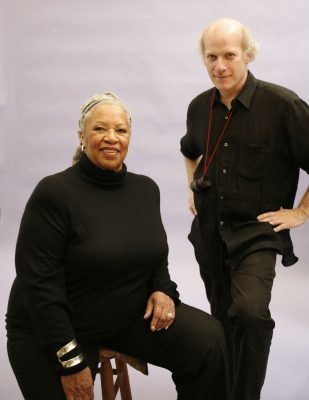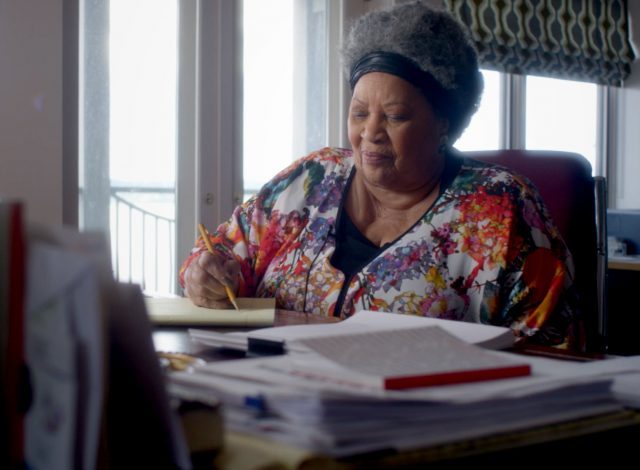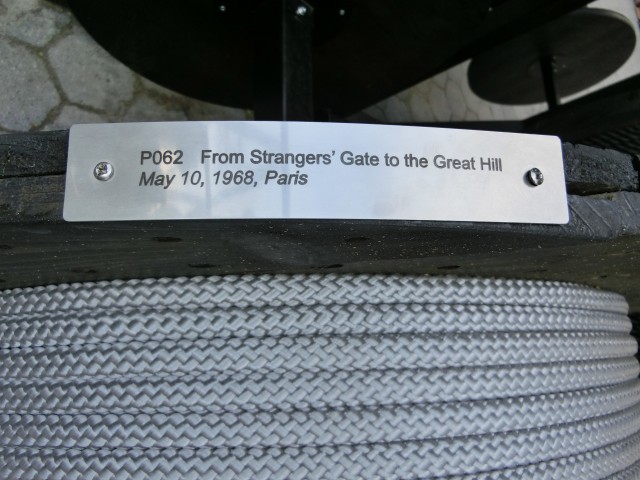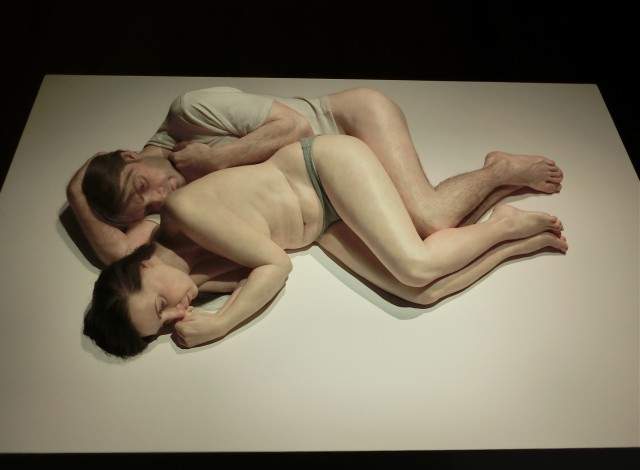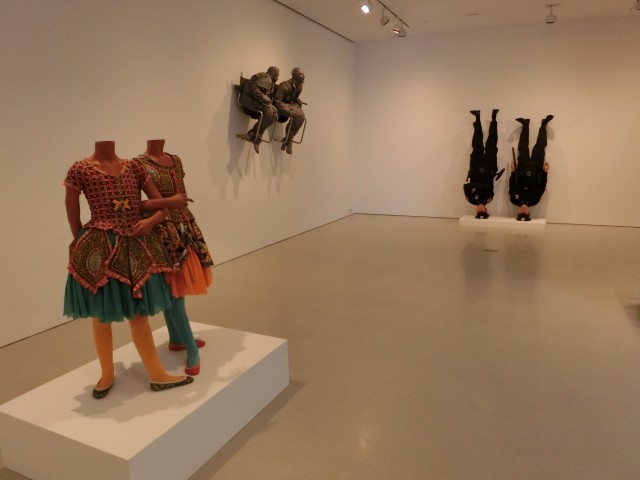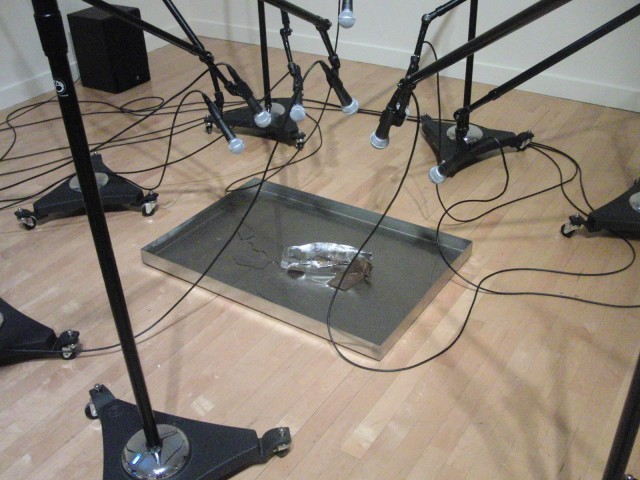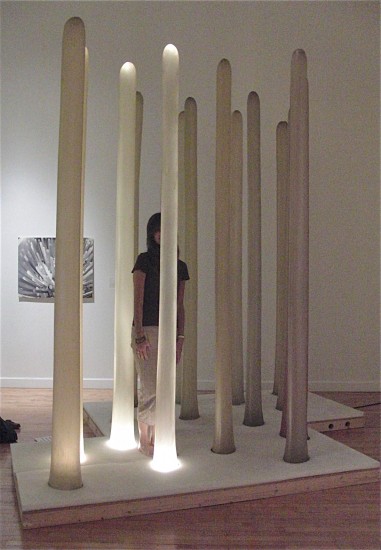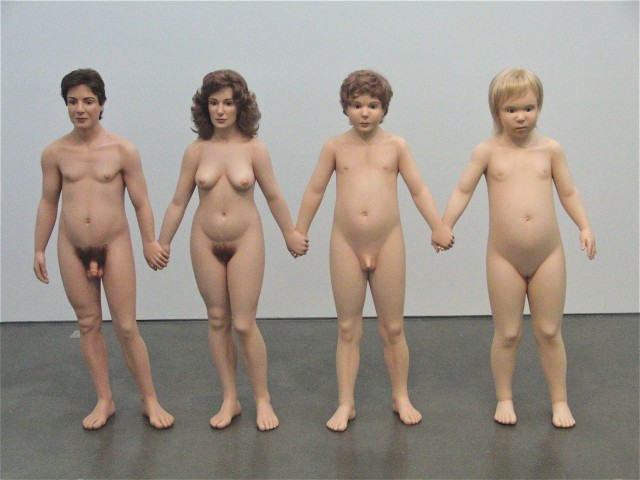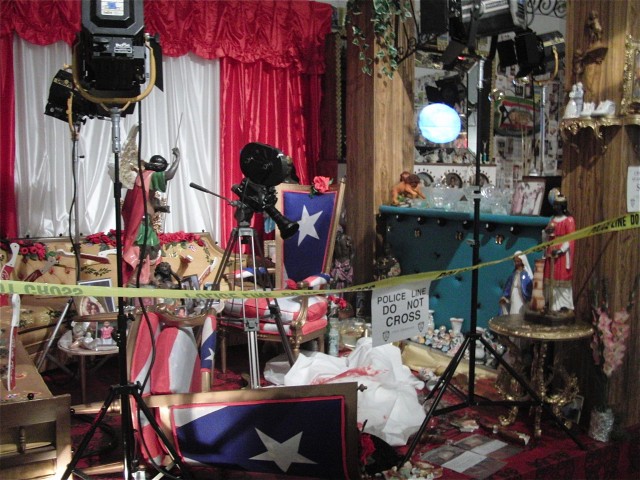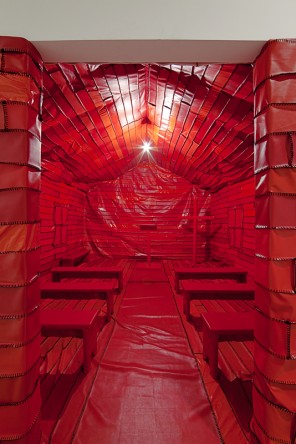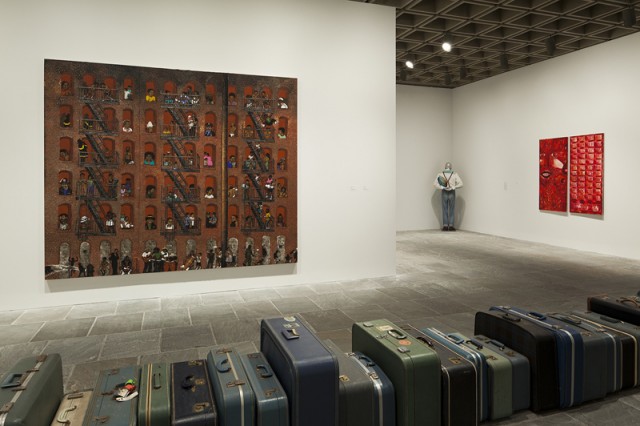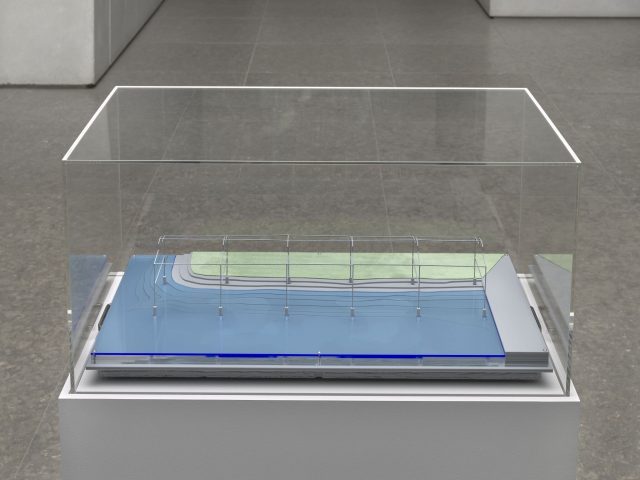
Architectural model for David Hammons’s Day’s End sits outside related exhibition at the Whitney (Catherine Seavitt and Rennie Jones of Guy Nordenson and Associates, 2017 / photograph by Ron Amstutz)
Who: Elena Filipovic, Frances Richard, Judith Rodenbeck, Randal Wilcox, Laura Phipps
What: Online discussion about “Around Day’s End: Downtown New York 1970-1986” exhibition
Where: Whitney Museum of American Art Zoom
When: Thursday, October 15, free with advance RSVP, 6:00; Tuesday, October 27, free with advance RSVP, 6:30
Why: In 1975, land artist and anarchitecture specialist Gordon Matta-Clark deconstructed an abandoned industrial building on Pier 52 on the Manhattan riverfront, cutting into the walls, doors, and floors and turning it into a unique kind of performance art piece, at least until the police shut it down and arrested him. You can watch Matta-Clark’s twenty-three-minute silent film about the project, which he called a “temple to sun and water,” here. American artist David Hammons is revisiting Matta-Clark’s intervention, known as Day’s End, by constructing his own version on the same site for the Whitney, which is right across the street. It is expected to be completed in December; in the meantime, the Whitney is presenting “Around Day’s End: Downtown New York 1970-1986,” a small show in the first-floor gallery that explores art depicting the waterfront area at the time, when it was known as a gay cruising hotspot. Among the photographs, drawings, sculpture, video, and paintings in the exhibition, which continues through November 1, are Dawoud Bey’s David Hammons, Pissed Off performance photos, Christo’s Package on Hand Truck, Joan Jonas’s Songdelay video, Martha Rosler’s The Bowery photo and text series, David Wojnarowicz and Kiki Smith’s Untitled (Psychiatric Clinic: Department of Hospitals), Anton van Dalen’s Street Woman on Car, Peter Hujar’s Canal Street Piers: Fake Men on the Stairs, and Carol Goodden’s documentation of Matta-Clark’s Jacks, in addition to works by Alvin Baltrop, Jean-Michel Basquiat, Jimmy Wright, and G. Peter Jemison and a vitrine of proposed projects for Pier 18 from Mel Bochner, Robert Morris, William Wegman, Richard Serra, Harry Shunk, János Kender, and Matta-Clark.
On October 15 at 6:00, the Whitney is hosting a virtual discussion about the exhibit, focusing on Baltrop, Hammons, Jonas, and Matta-Clark, with Elena Filipovic, author of David Hammons: Bliz-aard Ball Sale; Frances Richard, author of Gordon Matta-Clark: Physical Poetics; Judith Rodenbeck, associate professor and chair of media & cultural studies at the University of California, Riverside; and Randal Wilcox, who worked with Baltrop and is a trustee of the Alvin Baltrop Trust. The free Zoom talk will be moderated by assistant curator Laura Phipps, who organized the show with senior curatorial assistant Christie Mitchell. Phipps and Mitchell follow that up October 27 at 6:30 with the Zoom discussion “Community Conversation: Around Day’s End,” teaming up with the Hudson River Park Trust, the Meatpacking Business Improvement District, and Manhattan’s Community Board 2 to look at the project from a different angle.
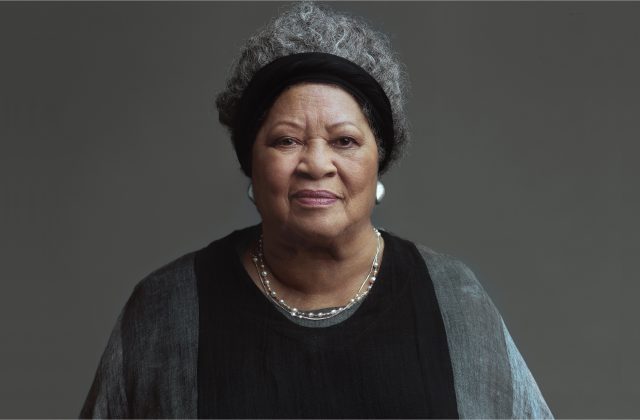
 At the beginning of Timothy Greenfield-Sanders’s Toni Morrison: The Pieces I Am, artist Mickalene Thomas’s hands are seen putting together a collage of different images of author Toni Morrison, like a jigsaw puzzle, one on top of the other, to the sounds of Kathryn Bostic’s score. It’s a beautiful start to a beautiful film that takes viewers deep inside Morrison’s life and career, from daughter and student to teacher, wife, mother, editor, and award-winning novelist. “She is a friend of my mind. She gather me, man. The pieces I am, she gather them and give them back to me in all the right order,” Morrison writes in Beloved. In the film, Greenfield-Sanders, Morrison’s longtime friend and primary photographer of nearly forty years, and editor and researcher Johanna Giebelhaus gather the pieces that help paint a portrait of the extraordinary person that is Toni Morrison.
At the beginning of Timothy Greenfield-Sanders’s Toni Morrison: The Pieces I Am, artist Mickalene Thomas’s hands are seen putting together a collage of different images of author Toni Morrison, like a jigsaw puzzle, one on top of the other, to the sounds of Kathryn Bostic’s score. It’s a beautiful start to a beautiful film that takes viewers deep inside Morrison’s life and career, from daughter and student to teacher, wife, mother, editor, and award-winning novelist. “She is a friend of my mind. She gather me, man. The pieces I am, she gather them and give them back to me in all the right order,” Morrison writes in Beloved. In the film, Greenfield-Sanders, Morrison’s longtime friend and primary photographer of nearly forty years, and editor and researcher Johanna Giebelhaus gather the pieces that help paint a portrait of the extraordinary person that is Toni Morrison.